History of Design Test 1 Objects
1/51
There's no tags or description
Looks like no tags are added yet.
Name | Mastery | Learn | Test | Matching | Spaced |
|---|
No study sessions yet.
52 Terms

industrial revolution
imperial Federation Map of the World, from The Graphic, July 24, 1886
words at the top freedom fraternity and federation. There are slaves and goods. Exchange of not only people but also the exchange of goods and land
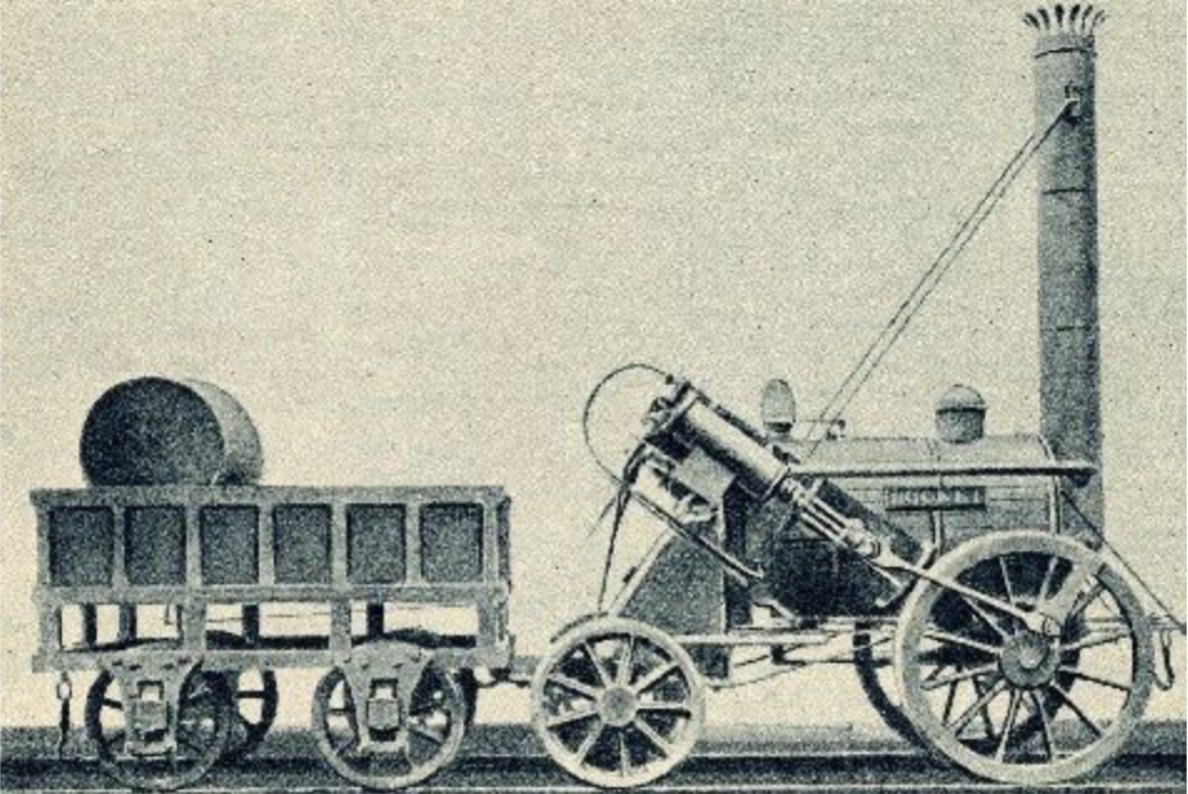
industrial revolution
Robert Stephenson, The Rocket, 1829
first locomotive. This was chose as the preferred mode of transportation and it was not only about transporting people but also goods and resources between locations. Coal powered this.
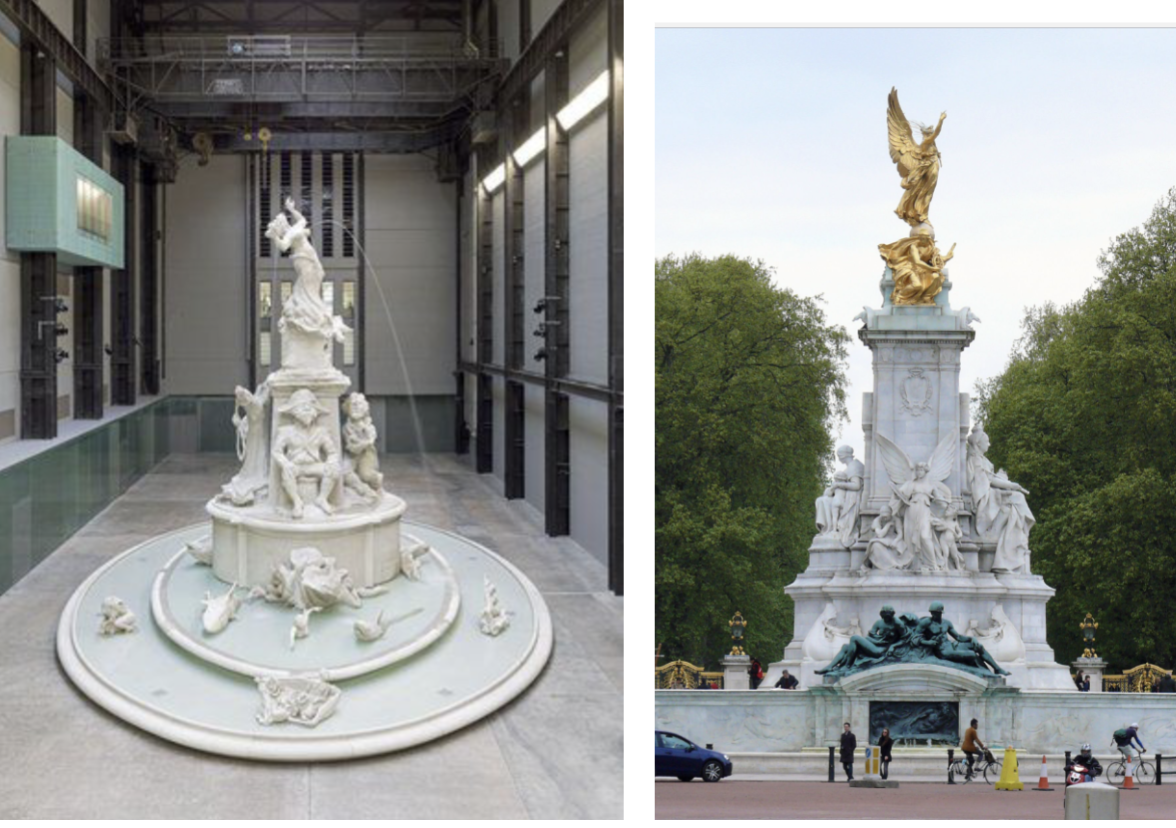
industrial revolution
Kara Walker, Fons Americanus, 2020 and Thomas Brock, Victoria Monument, 1901
Kara walker Fons Americanus AND Thomas brock Victoria monument: Victoria monument is celebrating and glorifying England and the queen while the Fons Americans is critiquing the exploitation of the slave trade under British power. It is showing the cost of colonization which often times is hidden and forgotten.
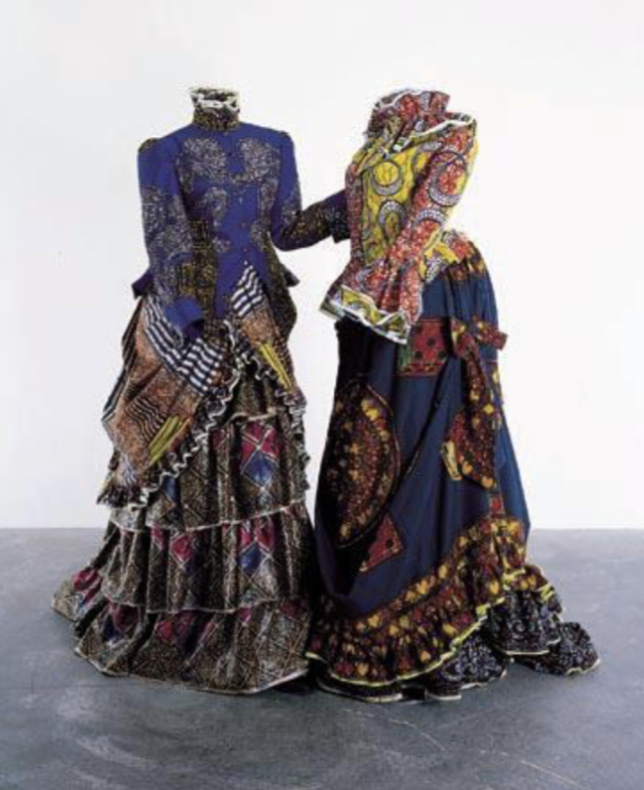
industrial revolution
Yinka Shonibare, “Gay Victorians,” 1999.
References batik cloth common in Nigeria
Europeans/Dutch took fabrics and added wax to the fabrics then sold them in mass markets in africa
Today these fabrics are known as african when they were dutch appropriations of african textiles
Brings into question “who gets the credit?”
Also brings into question what else we use/know of that we don’t know the true origen
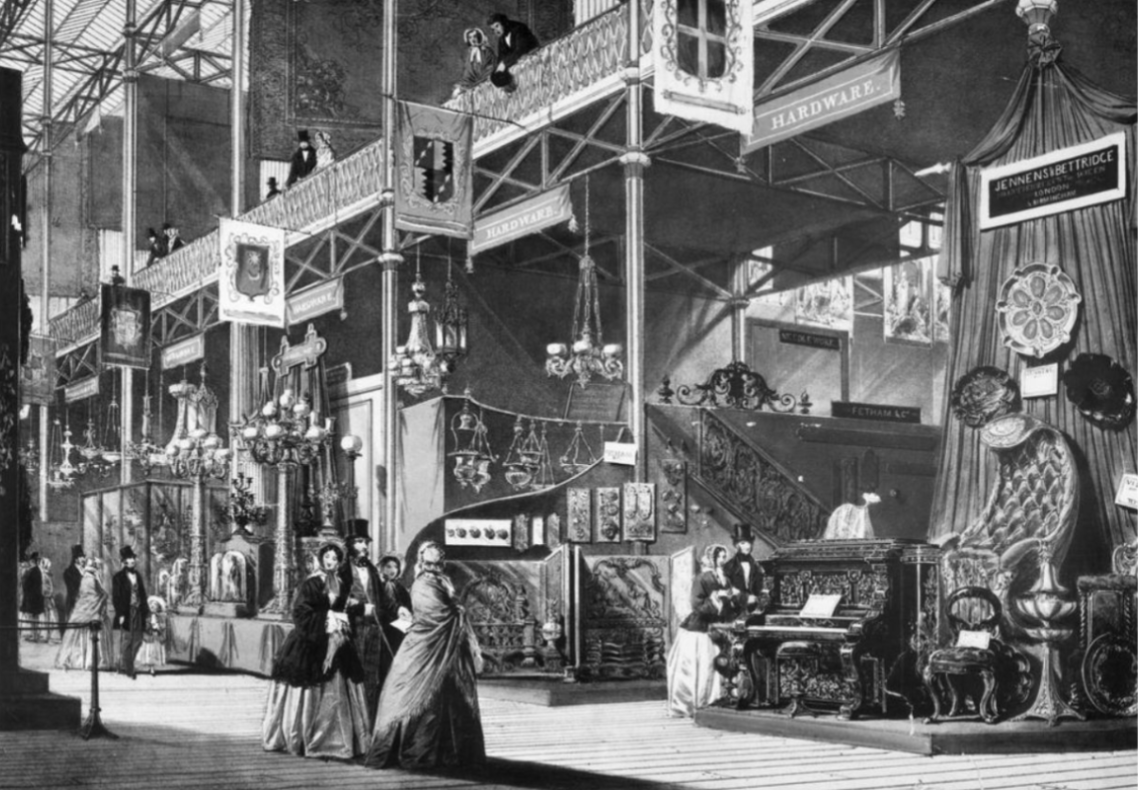
industrial revolution
Interior of the Great Exhibition
visited by high society people very wealthy. Machinery manufacturing fine arts and raw materials. It wasn’t only showing casing products from the UK. Around 25 countries were represented here. A lot more info on google doc about this :)
industrial revolution
Henry Cole for Felix Summerly’s Art Manufacture, designed 1846, made 1846-71.
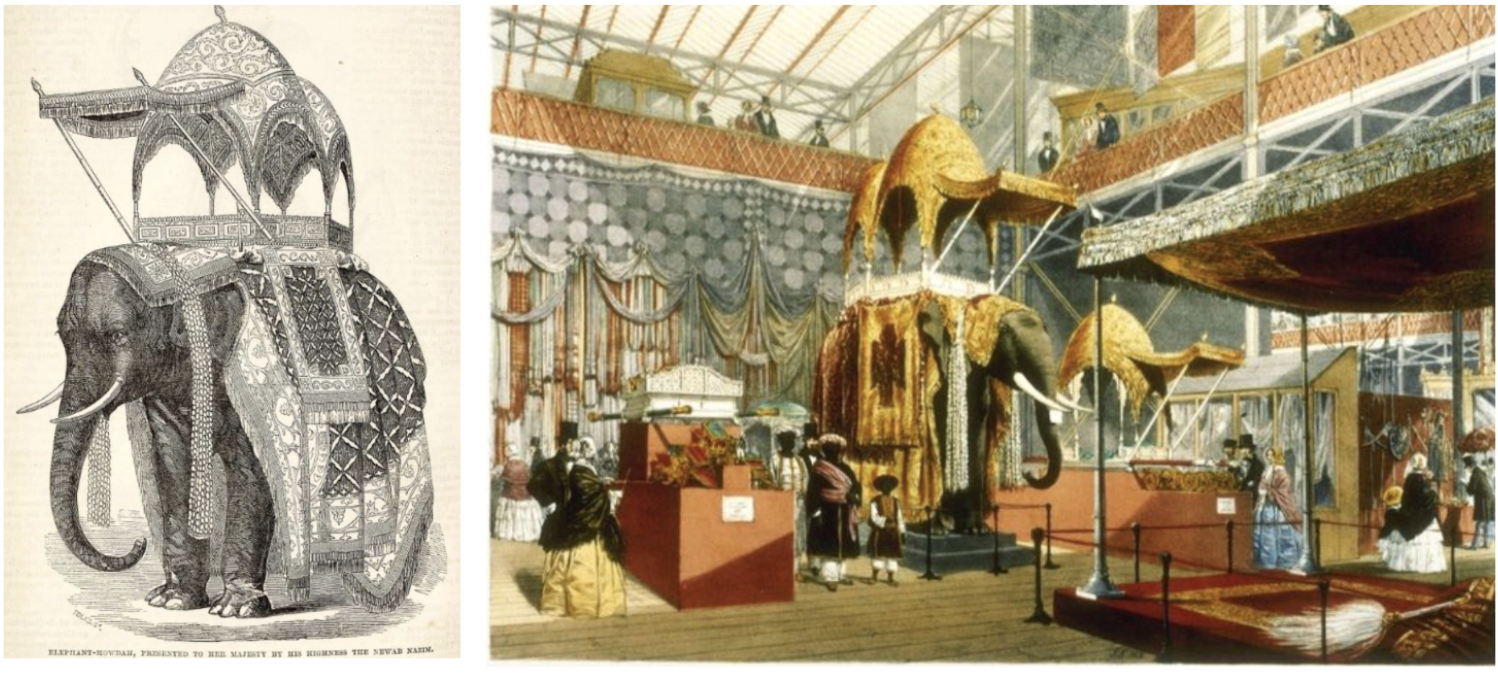
industrial revolution
John Nash, Stuffed Elephant and Howdah from India, The Indian Court, Crystal Palace, 1851.
at this time India was considered a place that they could extract goods from to make money. symbolized Britain’s global trade and imperial reach. These exhibits showcased the raw materials, craftsmanship, and cultural influence that fueled industrial growth and reinforced colonial dominance.
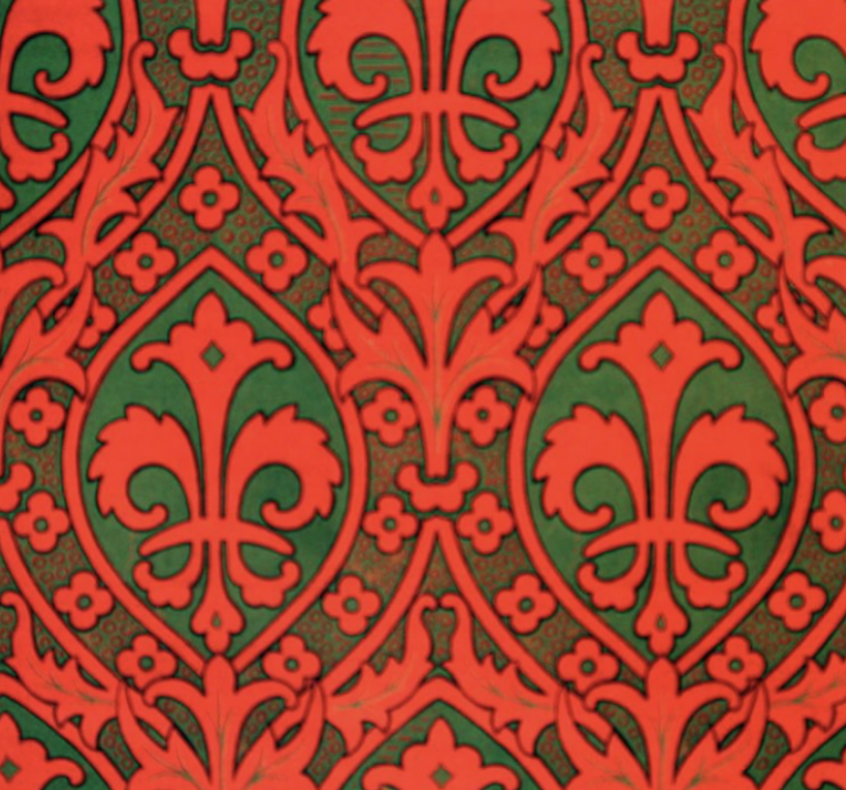
industrial revolution
A.W.N. Pugin, Wallpaper Design, c. 1851. For Palace of Westminster. Pencil and wash on paper
This embodied the Gothic Revival style, which opposed the mass-produced aesthetics of the Industrial Revolution by emphasizing craftsmanship and historical design. His work reflected a broader reaction against industrialization, advocating for a return to medieval-inspired artistry and influencing later movements like the Arts and Crafts Movement.
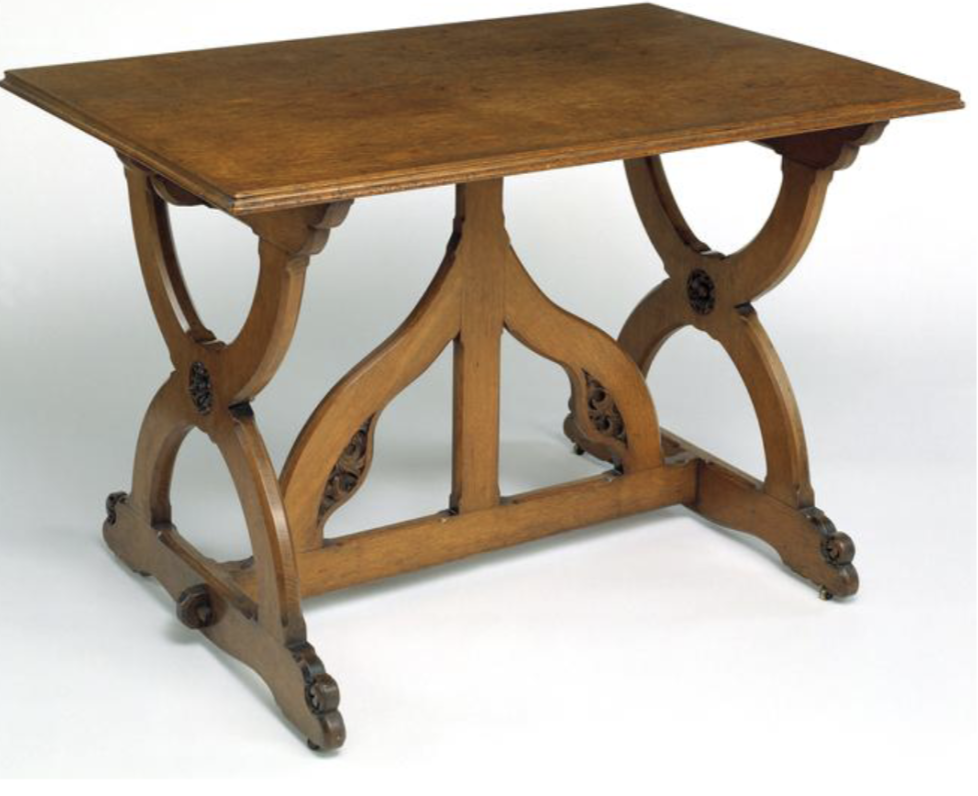
industrial revolution
A.W.N. Pugin, Table, c.1847, Carved Oak
Is an example of the gothic period
Can see all components of the table
Is seen as what it is: a table been to hold something
It is a carved oak table, the surface is carved oak, not painted or embellished
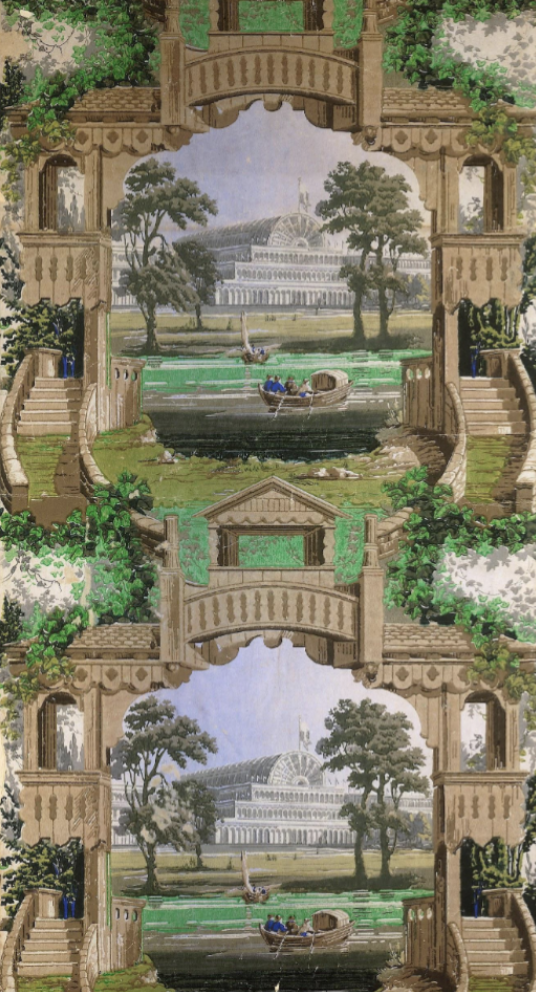
industrial revolution
Wallpaper illustrating the Crystal Palace, probably produced by Heywood, Higginbottom & Smith, about 1853 – 55, Manchester. Museum no. E.158-1934.
idk what this means
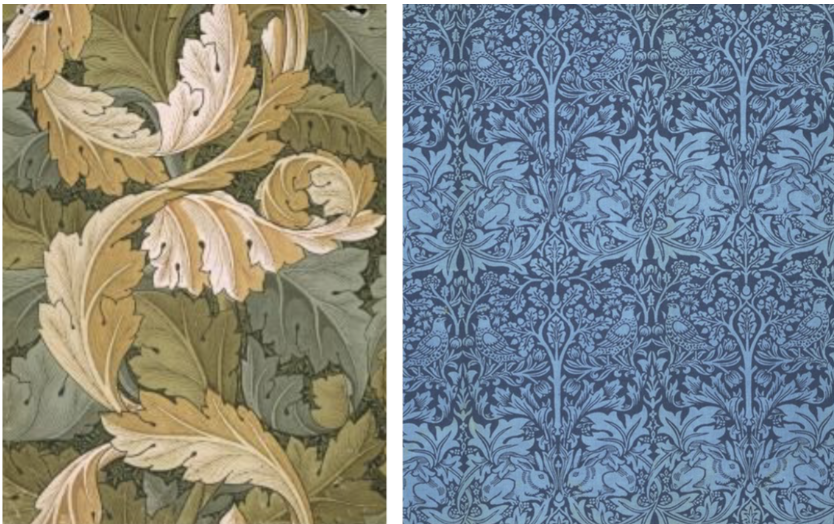
arts and crafts
William Morris, Acanthus, 1874. Printed distemper from wood blocks on paper;
William Morris,Brother Rabbit , 1880–1. Indigo discharged and block printed cotton.
Produced by Morris and Co. Merton Abbey, England
idk what this means
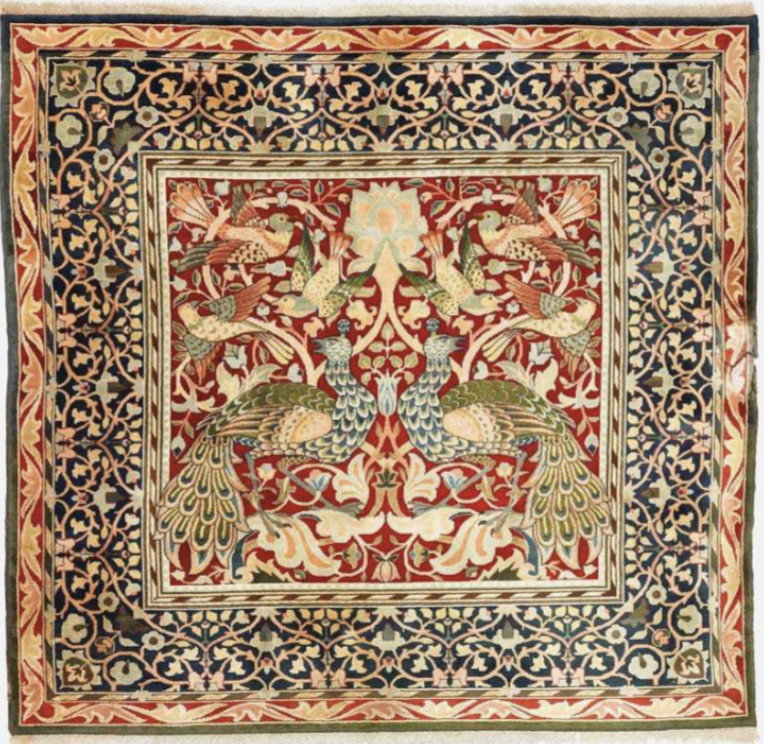
arts and crafts
Peacock and bird carpet c.1800s © William Morris Gallery, London Borough of Waltham Forest
Pre raphaelites
Looked back in time (before the 1800s)
Craft guilt
Focused on joy
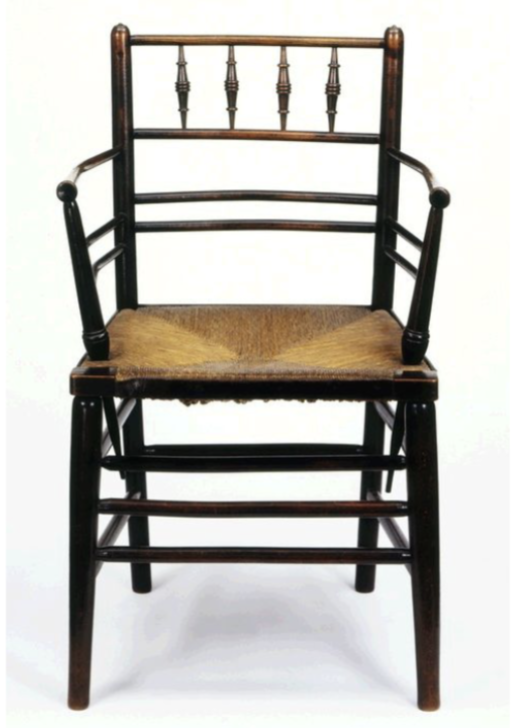
arts and crafts
D.G. Rosetti for William Morris and Co., Sussex side chair, Black painted bent wood and wicker, 1865.
idk what this means
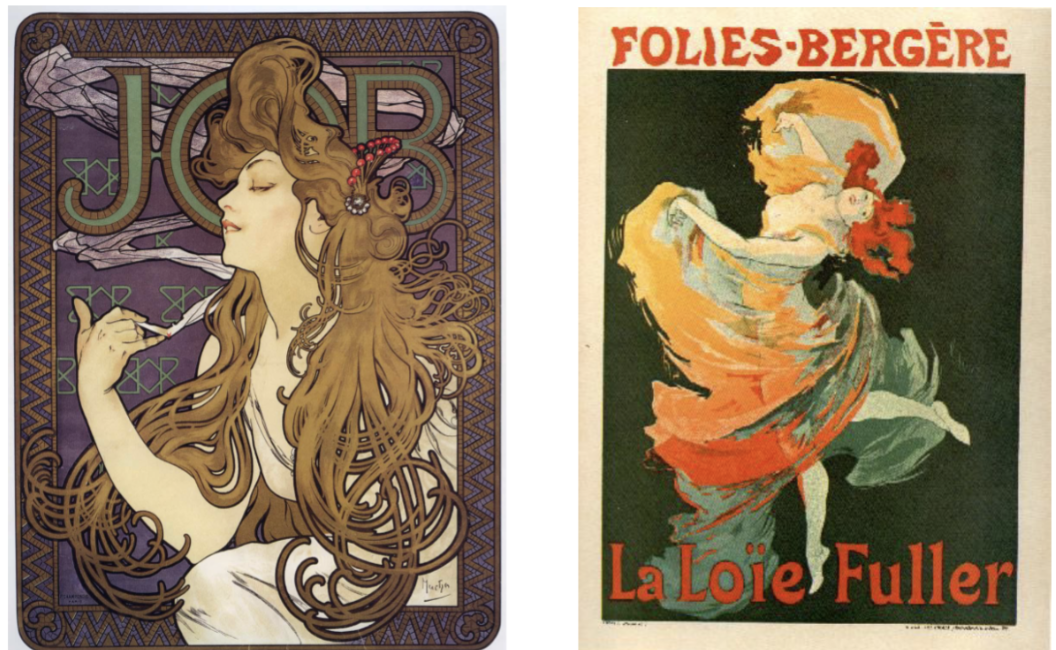
arts and crafts
Alphonse Mucha, Job Cigarette Papers, 1896, Color lithograph
Advertisement for cigarettes
Chromolithography was used as it allowed for mass production
Jules Cheret, La Loie Fuller, 1897, Color Lithograph
Inspired by japanese art
After trading rights were established with japan in the 1860s

art nouveau
Émile Gallé, Vase, Cameo glass with enamel decoration, 7 7/8 x 5 ¼ in. (20 x 13.3 cm), c. 1890
Philadelphia Museum of Art
Inspired by nature
Emile Galle was a glass maker and a furniture maker, created the museum of decorative art
Let go of historical styles and being inspired by nature
Promoted the union between art and industry

art nouveau
Henry Clemens van de Velde. Tropon, l'Aliment Le Plus Concentré (Tropon, the most concentrated nourishment), 1899 (Poster advertising protein extract)
Designed to advertise an egg based protein
Shows egg whites being separated from the yolks
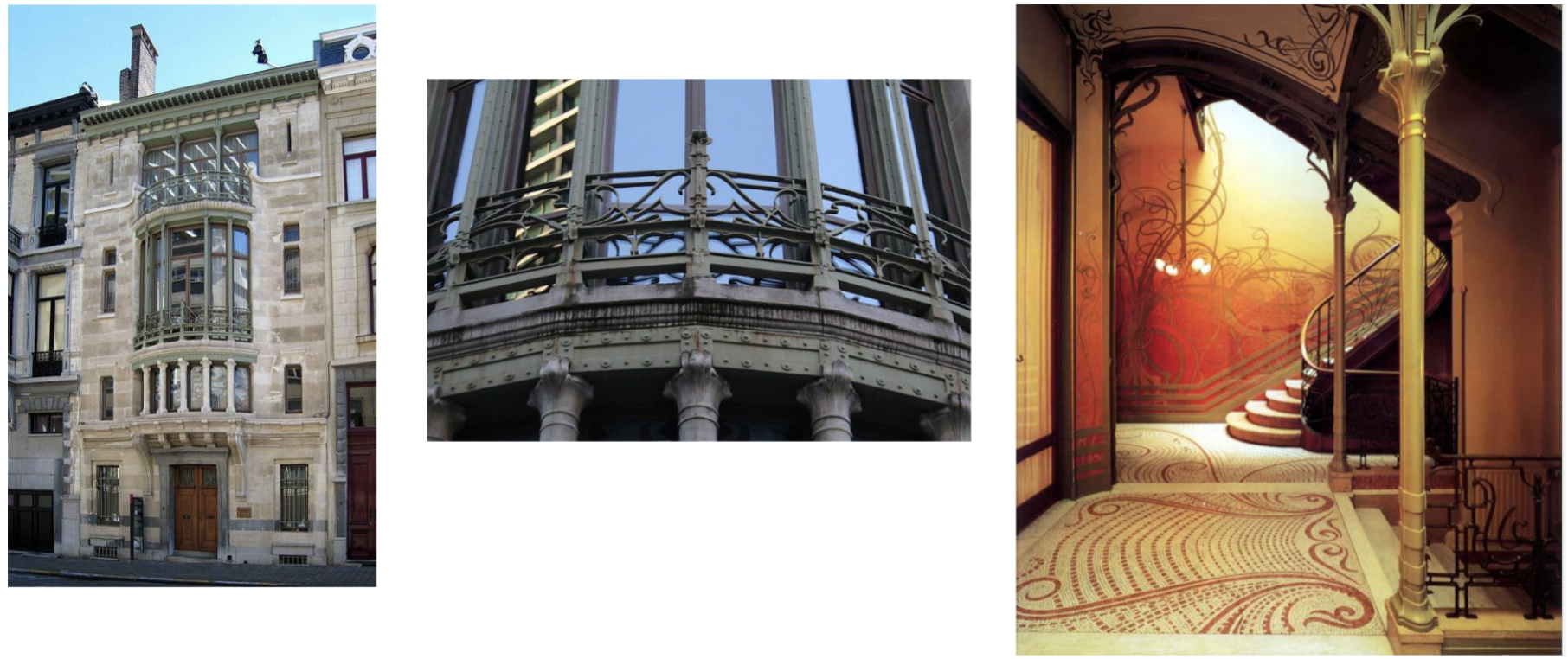
art nouveau
Victor Horta, Hotel Tassel, 1893. Main façade , Iron railings, First floor landing with view towards staircase, 1893. Brussels.
idk what this means

art nouveau
Hector Guimard, Banquette (For the Castel Beranger.), c. 1897.
At a time where smoking is very chic
Lines in the bench mimic the lines of the smoke of the cigarette
Has same lines as the lines in the posters
Lines are a big part of art nouveau
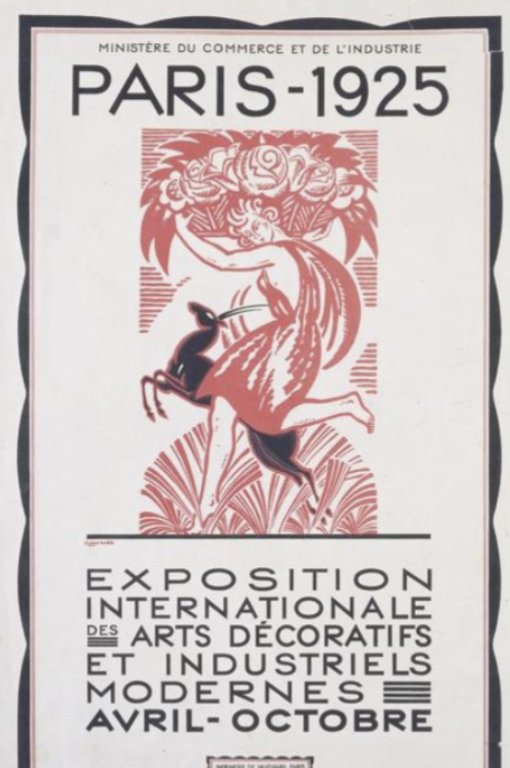
art deco
The Exposition’s poster, designed by Robert Bonfils, c. 1925, 15 1/2 x 23 3/4 in., Courtesy of the Victoria and Albert Museum
France was at the center of Art Deco
Also center of WWI western front
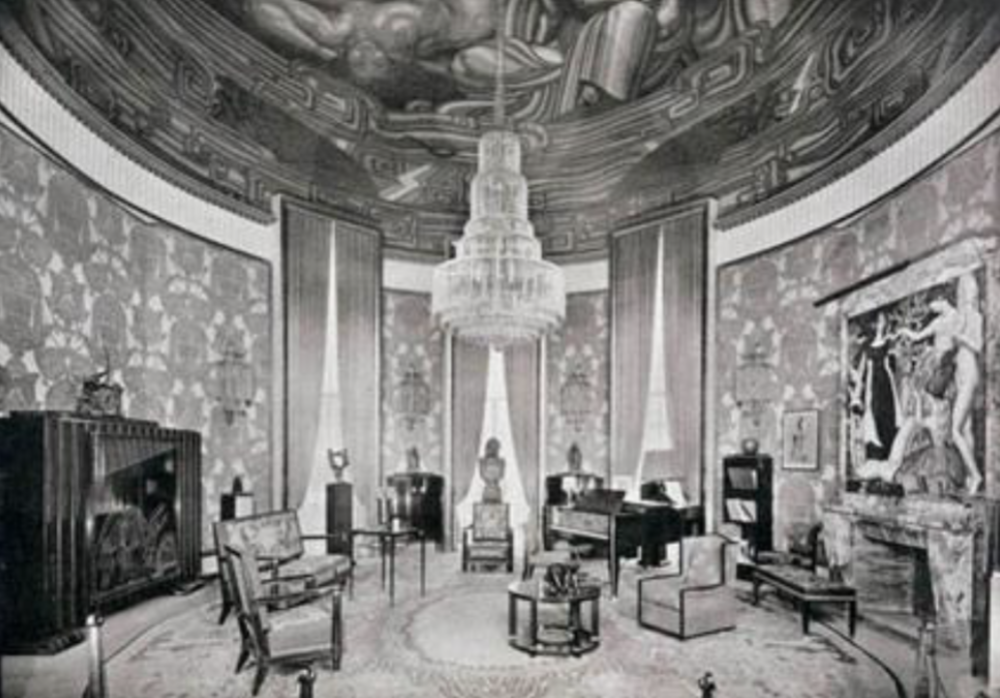
art deco
Jacques-Emile Ruhlmann, Grand Salon in the Hotel d’un Collectionneur, at the Paris 1925 Exhibition
In the exhibition
Still looks traditionally french instead of modern
Designers in art deco look at historical styles within their installations
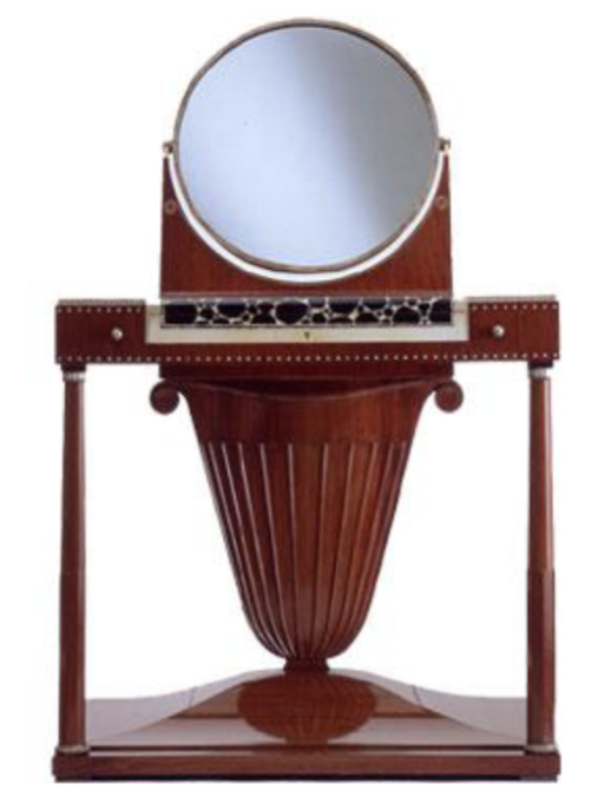
art deco
Jacques-Emile Ruhlmann, Dressing Table, 1925, Oak with amaranth and mahogany veneer; ebony and ivory inlays
New forms, proportions, and materials
Mahogany, ebony, and ivory (raw materials that aren't from France but from French colonies(asia, africa, north america, and the caribbean)
Luxurious and “exotic”
Goes against the locality and use for every person ideals in Art Nouveau
Some pieces were sold directly into museums instead of going into homes
Such raw materials lead to appropriations in culture
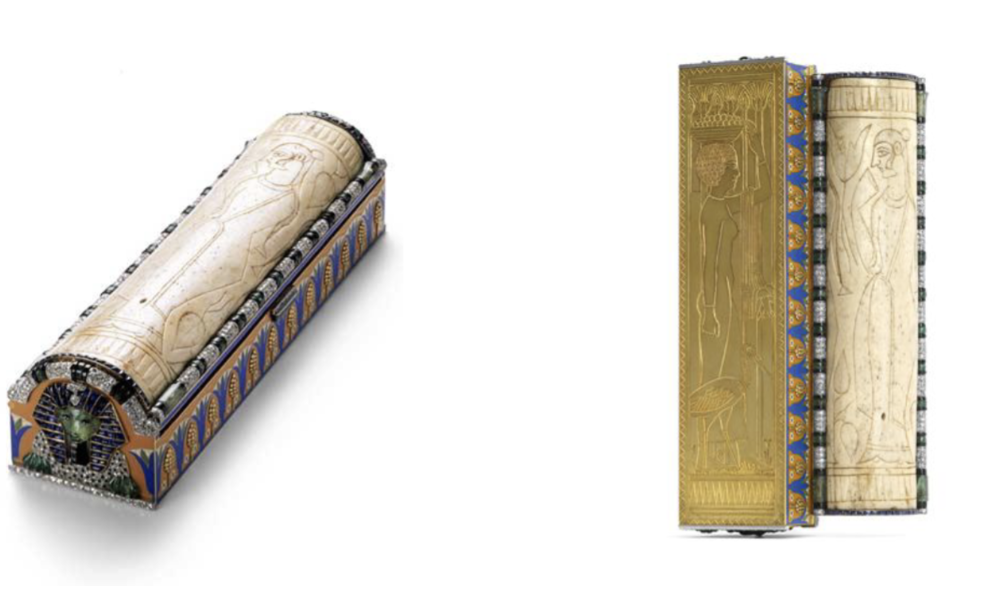
art deco
Cartier, Egyptian Sarcophagus Vanity Case, 1925, Gold, platinum, carved bone, sapphires, emeralds, diamonds, onyxes, and enamel
Example of tutmania
Clearly see egyptian motifs through the shapes, colors, and imagery
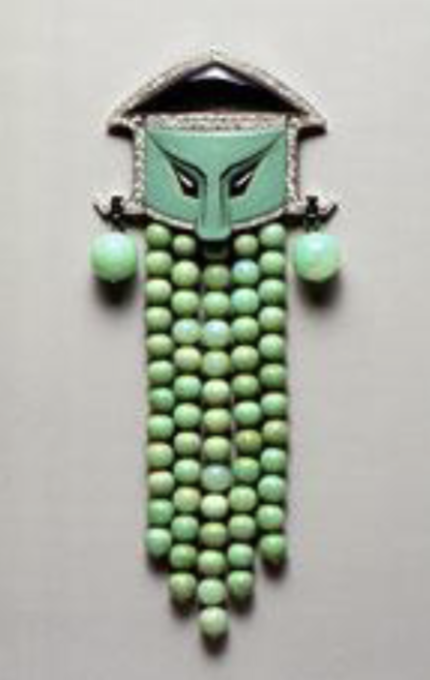
art deco
Jacques-Emile Ruhlmann, George Fouquet, Corsage Ornament, 1923, Jade, onyx, diamonds, enamel, and platinum
Shows the bias the west has of the east
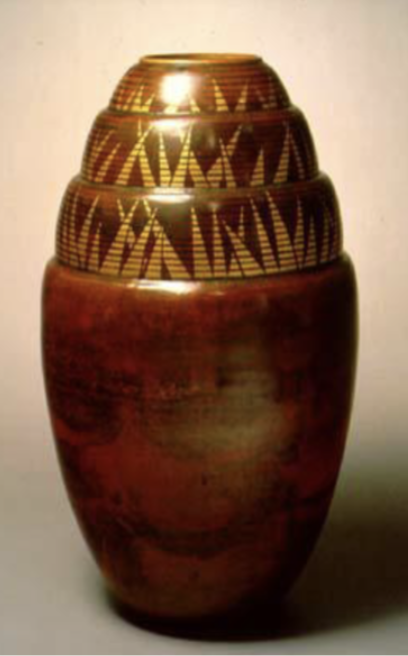
art deco
Jean Dunand, Vase, 1925, Copper with gold
Inspired by Art Nouveau and new materials circulating through Art Deco movement
Regular and geometric shapes
Decorative arts
Inspired by japanese art
Abstract grass depictions
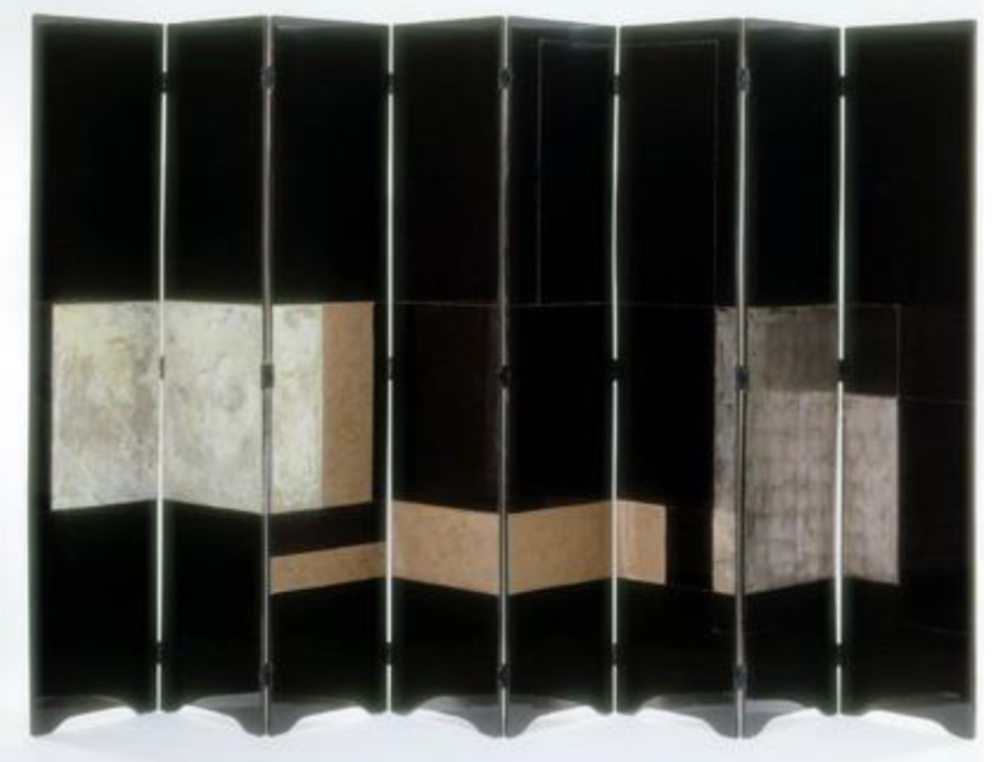
art deco
Eileen Gray, Screen, c. 1923, Lacquer on wood
Modernist architect and furniture designer
Straddled Art Deco and Modernist Movement
Bi icon
Paris allowed women to be a safe haven for bi and lesbian women
Work revolves around these “unconventional” lifestyles
Adapted the wall to be a stand alone wall to be made for people that didnt have the funds or the space for that whole wall

art deco
Eileen Gray, ”Lit Pirogue” (Canoe Daybed), before 1922, lacquered wood, 28 ½ x 106 ¼ x 25 5/8 in. Source: Virginia Museum of Fine Arts. Digital Image
Inspiration from the shape of canoes in caribbean
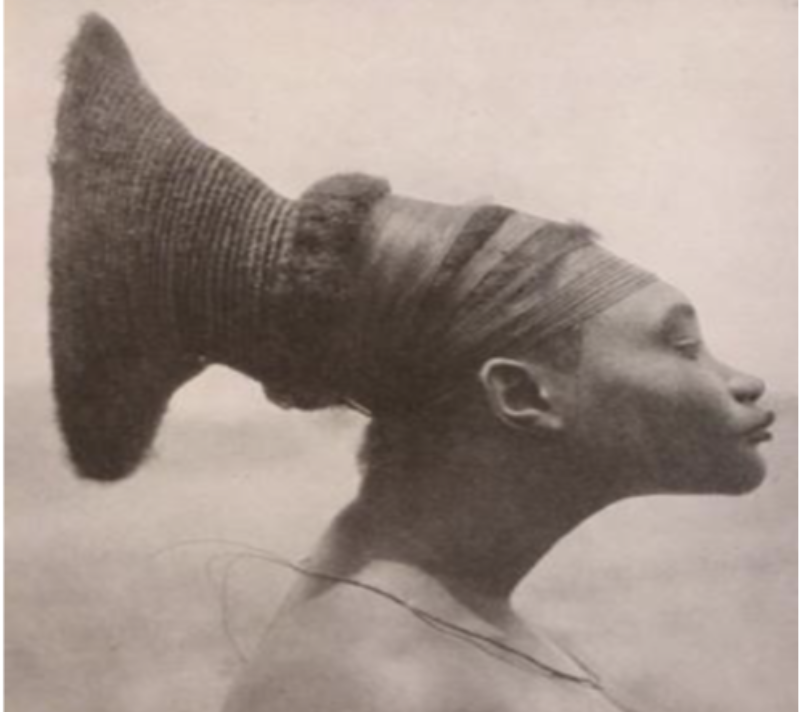
art deco
Georges-Marie Haardt, photograph of Nobosudro La Croisiere Noire: Expedition Citroen Centre-Afrique
-Photo taken in 1924 by George Specht during La Croisière Noire expedition.
Nobosodru: Mangbetu woman, wife of King Touba, from the Democratic Republic of the Congo.
Photo circulated in popular culture, intended to showcase African beauty and the advanced Mangbetu society.
Image symbolizes exoticism and sexuality assigned to Africa by European and American cultures.
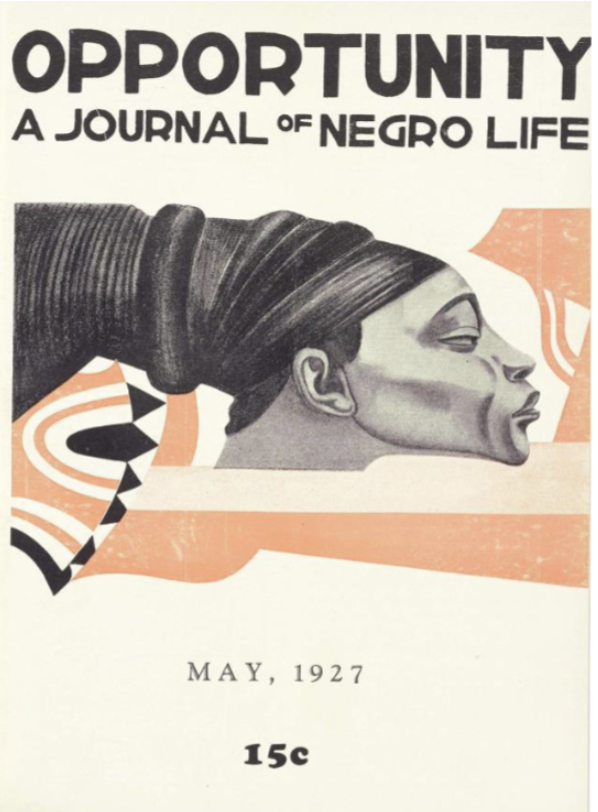
art deco
Aaron Douglas, Opportunity: A Journal of Negro Life, 1927 *
Reclaimed by the African American community in New York
Showing what the future would look like without the racist implications of our society
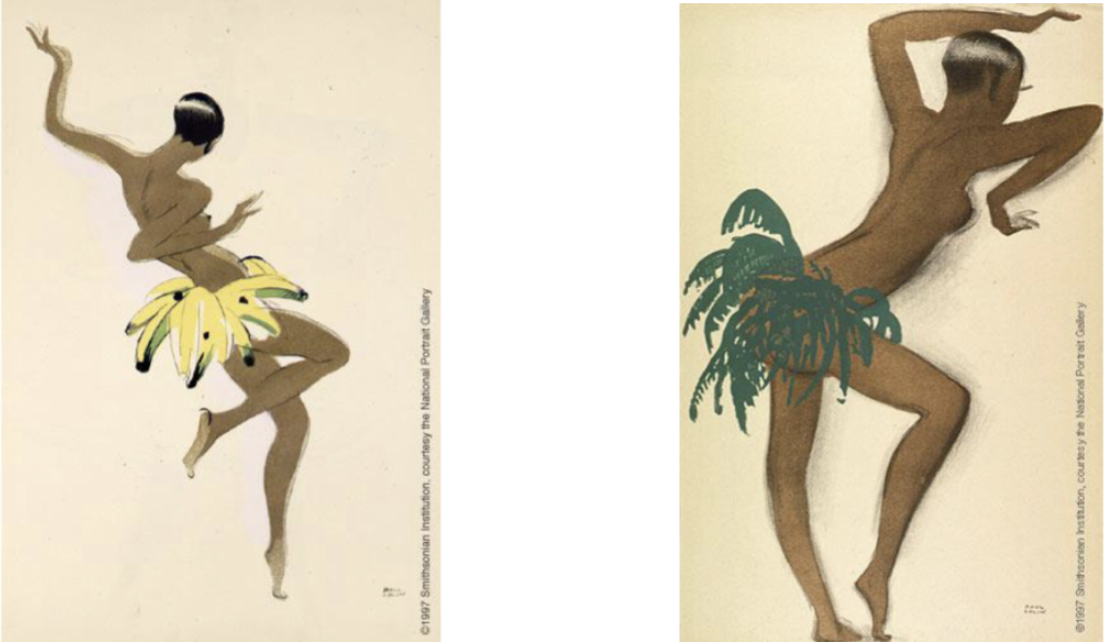
art deco
Paul Colin, Josephine Baker, “Le Tumulte Noir”, Paris, 1929
Color pochoir lithographs from Le Tumulte Noir, Published by Éditions d'art, Succès: Paris, 1929
Lithographs drawn on stone and colored by hand
Not only the content of the image but the materiality
How its made and the technique being used
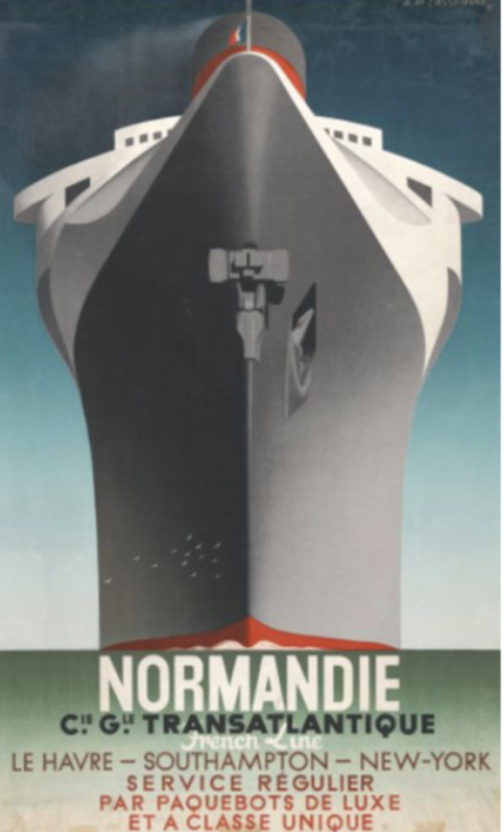
art deco
A.M. Cassandre, Poster (Normandie Cie Gle Transatlantique French Line), 1935, Lithograph, 39 3/4 × 24 1/4 in. (100.97 × 61.6 cm)
Prominent in Graphic Design history
Important as it shows travel
Geometric clean and precise lines
Style is distinct by this time period
Airbrush
Airbrushes were relevant for catalogs
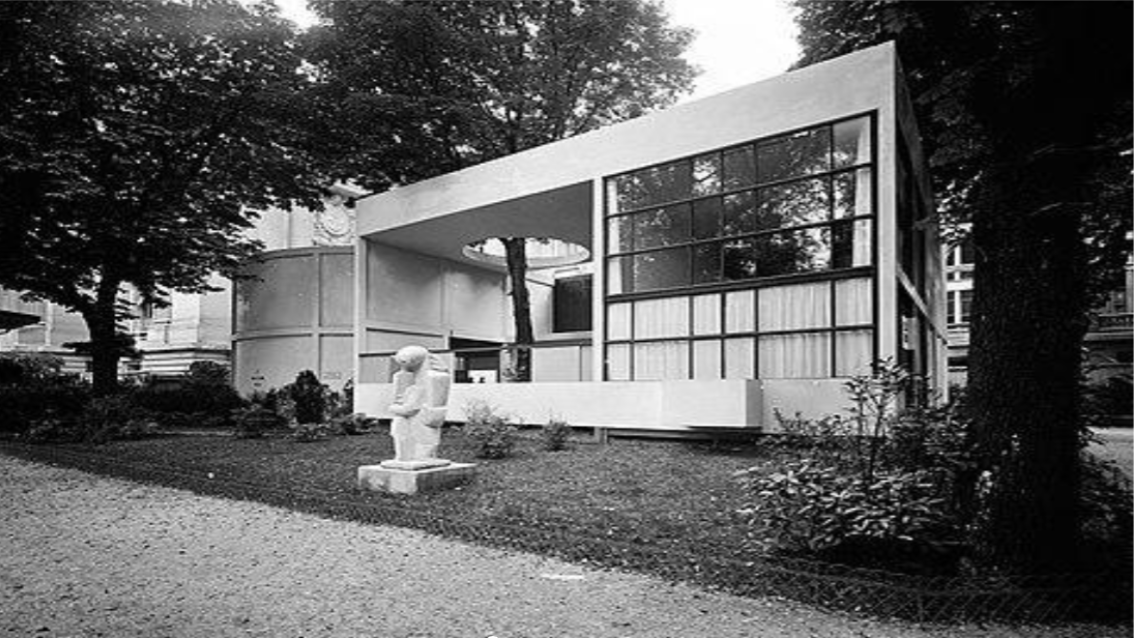
Modernism
Pavillon de l'Esprit Nouveau was a model home constructed for the 1925 International Exhibition of Modern Decorative and Industrial Arts in Paris, France. The building was designed by Swiss architects Le Corbusier and Pierre Jeanneret
Swiss architect - le corbusier - the model home
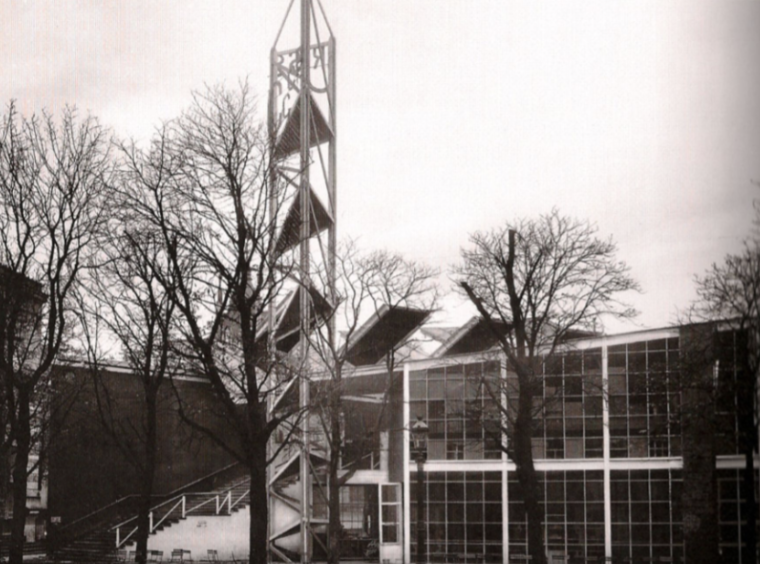
Modernism
Konstantin Melnikov, Soviet Pavilion at the Paris Exposition Internationale des Arts Décoratifs et Industriels Modernes, 1925.
idk what this is
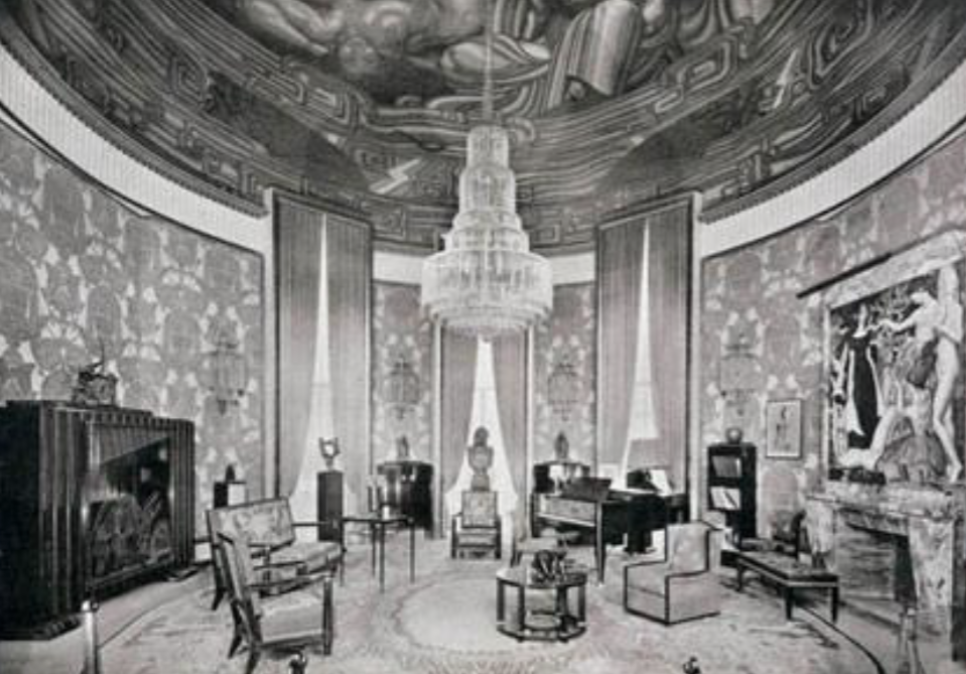
Art Deco
Jacques-Emile Ruhlmann, Grand Salon in the Hotel d’un Collectionneur, at the Paris 1925 Exhibition
Represents the ideal home of the collector
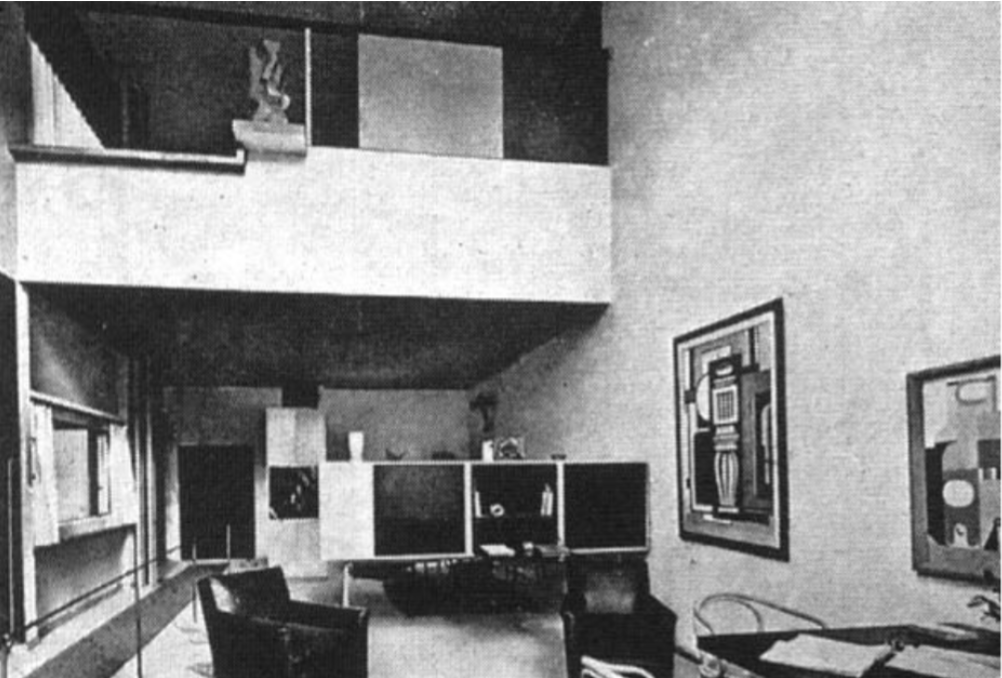
Modernism
Le Corbusier and Pierre Jeanneret, Interior of Pavillion de L’Esprit Nouveau, 1925 Paris Exhibition
Post WWI focus in need for housing
Inspired by symmetry
These standards are for everyone
Standardized living in cities
Multipurpose furniture pieces
furniture as equipment for living
Furniture to easily clean
Flu epidemic and tuberculosis
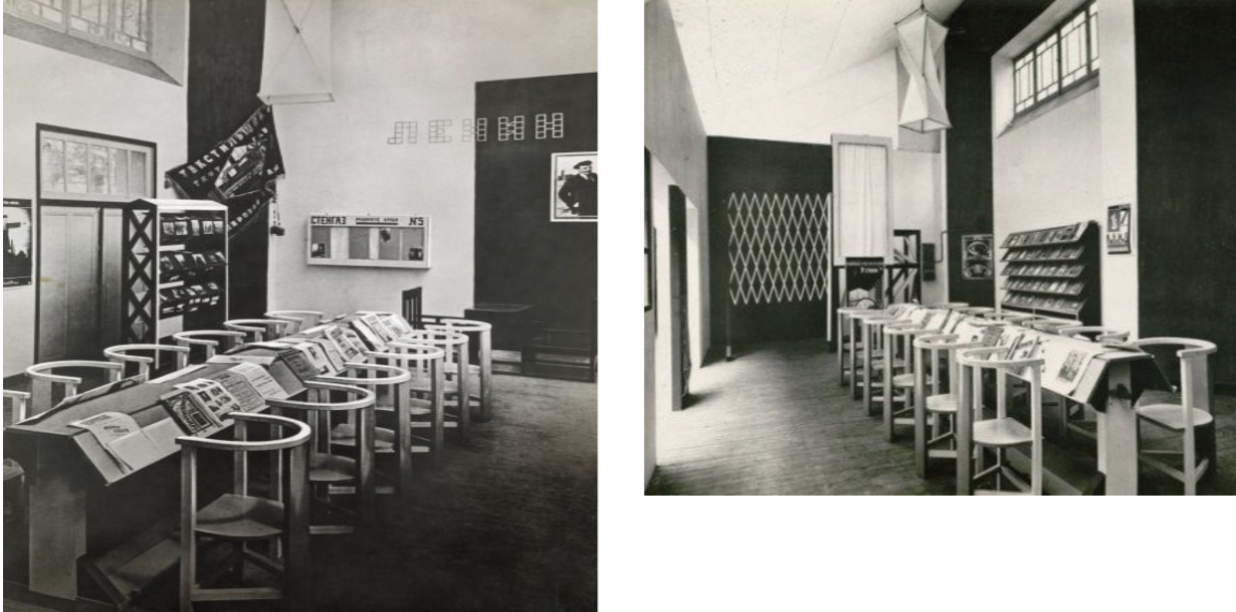
Modernism
Aleksandr Rodchenko, USSR Worker’s Club, 1925 Paris Exposition
-Constructivism
-Image of the interior of workers club
-Idea that Workers deserved a space for relaxation
- In the form of reading, playing chess. Productive leisure time
- Absence of decoration, emphasis on standardization -
A seriousness to play - the value of play
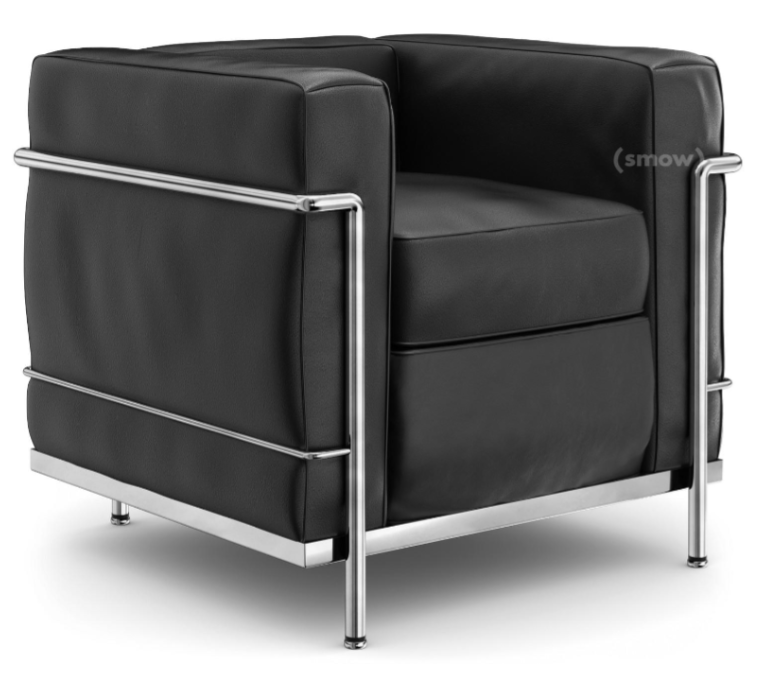
Modernism
Le Corbusier (Charles-Édouard Jeanneret), Pierre Jeanneret, Charlotte Perriand, Grand Confort, 1928
Efficient and easy to clean
Cushions come out
Symmetric elements compiled into one object
Machine- “a machine for sitting on” how he describes it
Undecorated elegance
Comfort and functionality often being the top priority
Ornaments are considered unnecessary
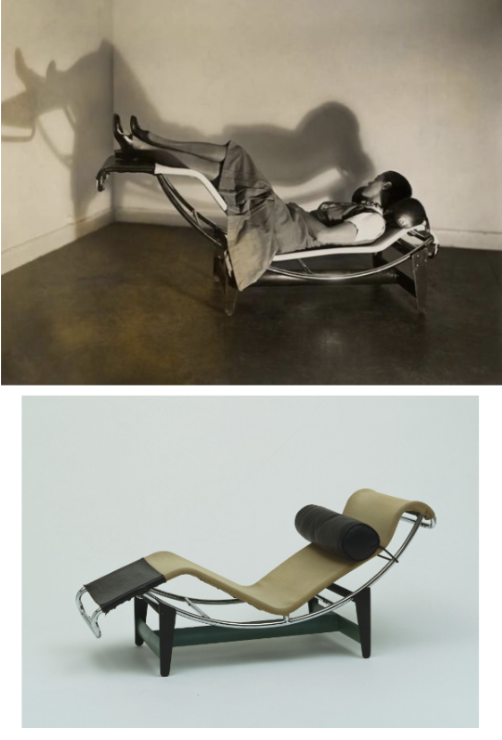
Modernism
Le Corbusier (Charles-Édouard Jeanneret), Pierre Jeanneret, Charlotte Perriand, B306 Chaise Lounge, c. 1928
Built for health in mind (better blood circulation)
Reclining in a way to boost blood circulation
Inspired by the way a hospital bed can move and recline
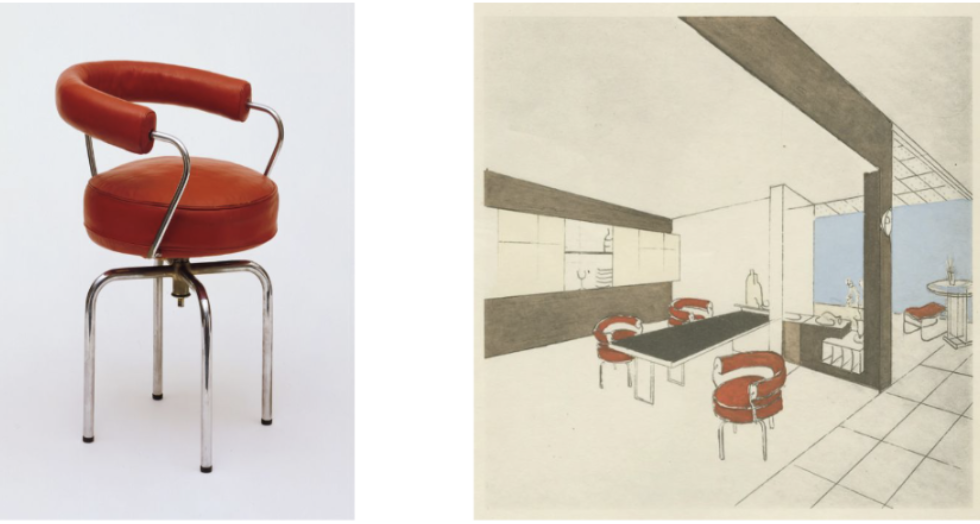
Modernism
Charlotte Perriand, Revolving Armchair, 1928 Manufacturer: Thonet Frères, Paris, France, Chrome-plated tubular steel and leather, 29 3/4 x 22 x 21 1/4" (75.6 x 55.9 x 54 cm), seat h. 21 5/8" (54.9 cm
Revolving armchair
required a lot of hand work = increased cost
This is an example of that collaboration with Le Corbusier
Partially inspired by an office swivel chair
Built for health in mind with a soft cousin
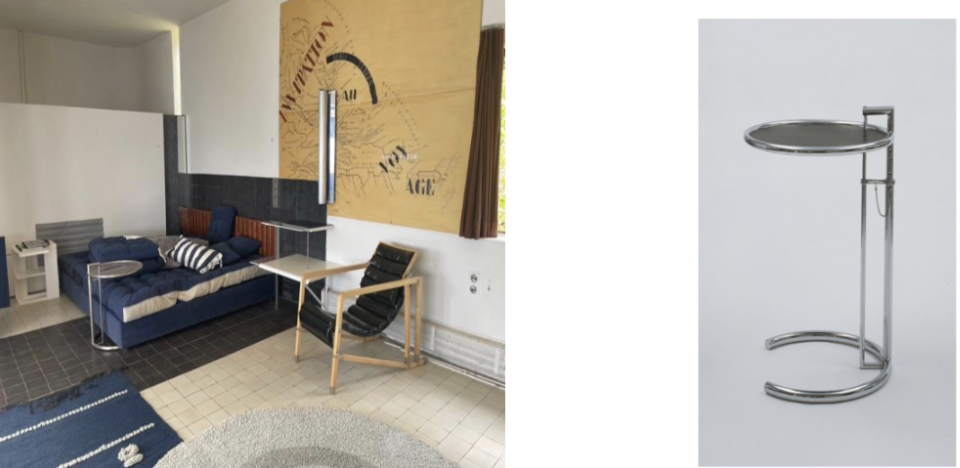
Modernism
Eileen Gray, interior of E-1027, Roquebrune-Cap-Martin, France, 1926-29.
Eileen Gray, “E1027, Adjustable Table, Breakfast Table”, 1927 Aram Designs Ltd., London, Chrome-plated tubular steel, sheet steel, and glass,
Name shows the code from each of the artists
Codes for names were being integrated into a lot of the designs to devoid of the emotion held in the objects
Home filled with modern rugs
Everything in the house could move and could be used as a multipurpose
Exterior looks like the outside of a ship, referencing the sea
Tubular steel table (known as the breakfast table or the E 1027 table)
Bedside table so you could eat in bed without leaving crumbs on the sheets
Could tuck above and under the bed was built to hug around the side of the bed
The table top could be lifted or dropped in height
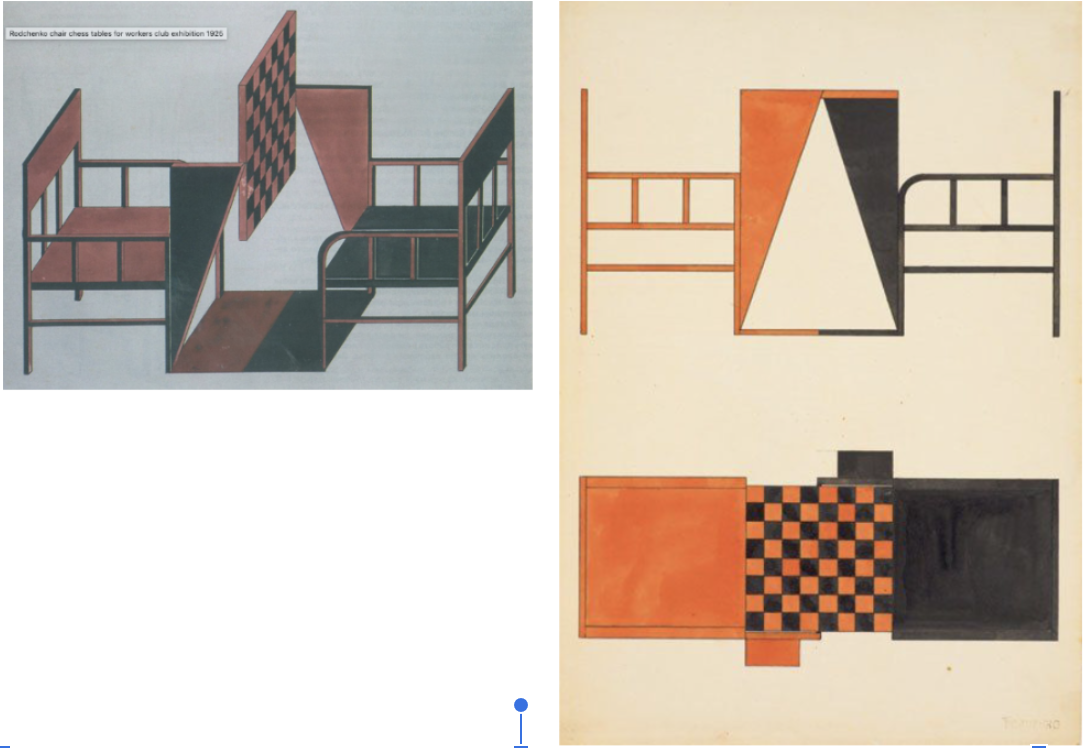
Modernism
Aleksandr Rodchenko, Design for USSR Worker’s Club, Chess Table, Black and red India ink and gouache on paper, 1925 Paris
Constructivism in the soviet union
Constructivism: alteration of modernism
Constructivism - art and design is constructed
New methods of creation
Theoretical and scientific approach to making
Similar to modernism in Europe but different
Proletariat - workers
Taking over society... Opportunity to build new world
USSR 1922 - under lenin
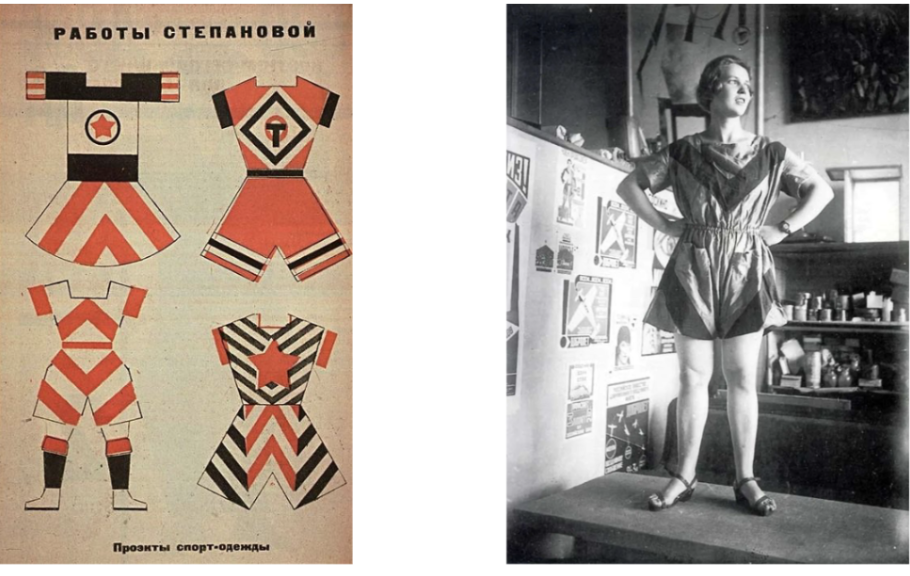
Modernism
Vavara Stepanova, Design for Sport Clothing, 1923
Unisex
Promotes equality among sexes
Worker focused society
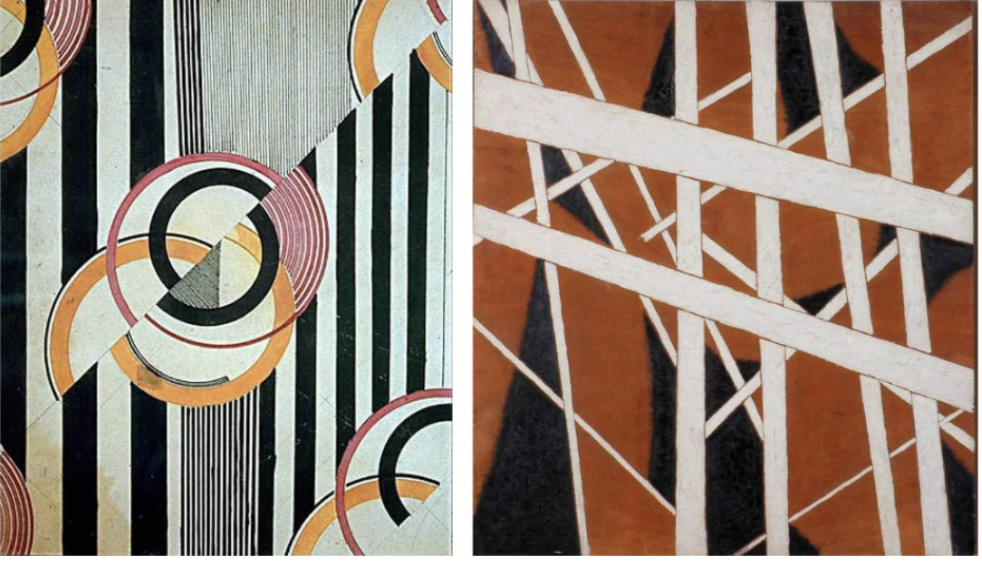
Modernism
Liubov Popova, Textile Design c.1924, Pencil and ink on paper
Liubov Popova, Space Force Construction 1921, Oil, with wood dust on plywood, 710 x 639 mm State Museum of Contemporary Art, Thessaloniki, The George Costakis Collection
Fun Textile designs were created due to the shortage of cloth
Everyone was actively participating in working for the people
Favored geometric forms
Geometry is associated with the machine
Emphasized the working class
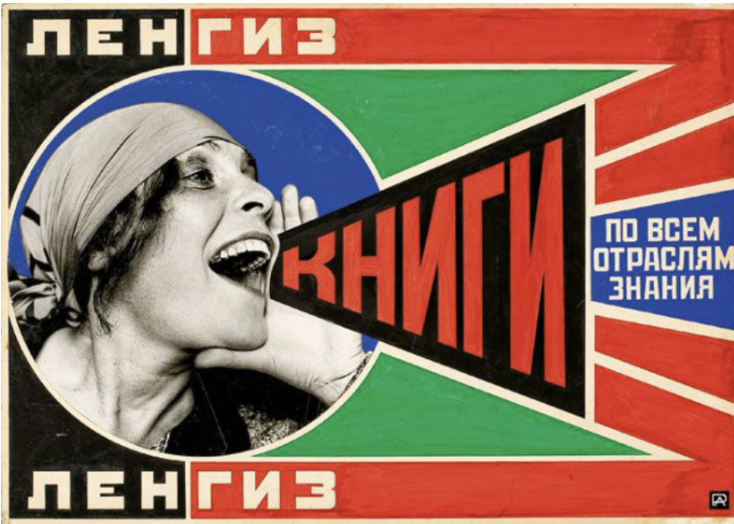
Modernism
Aleksandr Rodchenko, “Lengiz. Books on all the branches of knowledge,” advertising poster for the Leningrad Department of Gosizdat (State Publishing House), 1924
Russia is struggling economically.
Lenin introduces a limited form of capitalism
Posters are a strong choice of advertising
This one: For soviet airline - convince investors to join
Encourages literacy - “literacy will change society”
A society with no hierarchy - where everyone participates,
Photomontage: composite image by juxtaposing different images - innovative form of making art
First used by Dada artist, later surrealists
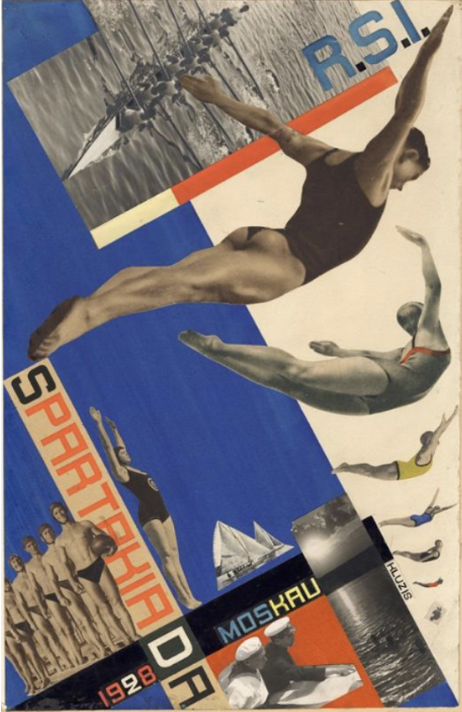
Modernism
Gustav, Kluzis, The Moscow Spartakiade, Russia, 1928. (Communist Sports Swimming Propaganda Poster)
Technology used to create the poster
The message the poster is sending
Simple typography and composition
Bold colors
Using actual images (its real)
Gives a more real message to the viewer

Bauhaus
Peter Keler, Cradle, 1922
... moving on to bauhaus and how Modernism evolved in Germany -Simple shapes & forms
-Primary colors and forms - all made by hand
-Similar to the design reform but without the religious connotation
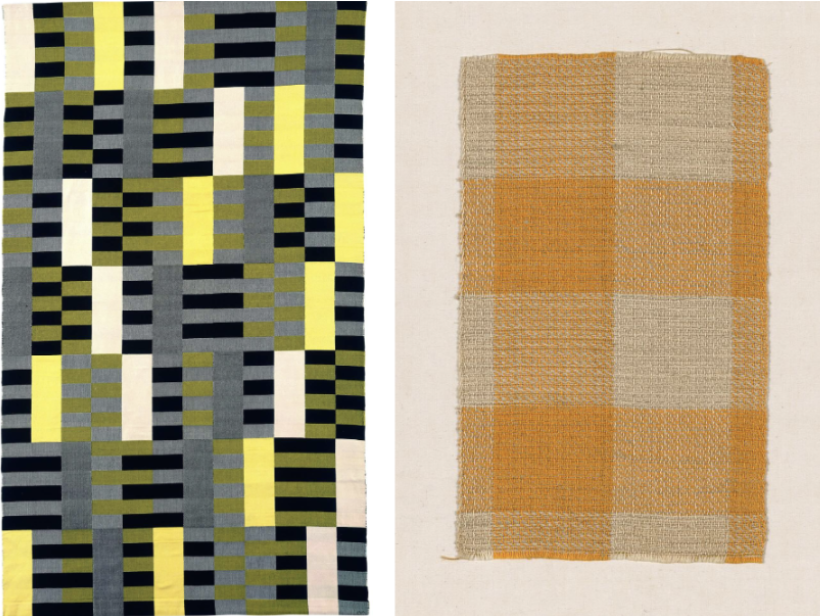
Bauhaus
Anni Albers Black White Yellow 1926, re-woven 1965
Anni Albers , Sample, 1926/65, Cotton and linen, combined twill weave with paired wefts
Examples of her textiles at Bauhaus
Bold and simplistic
New vision using traditional mediums
She taught weaving in the bauhaus → it became profitable
women are helping fund the school
They turned textiles into objects so they could be sold
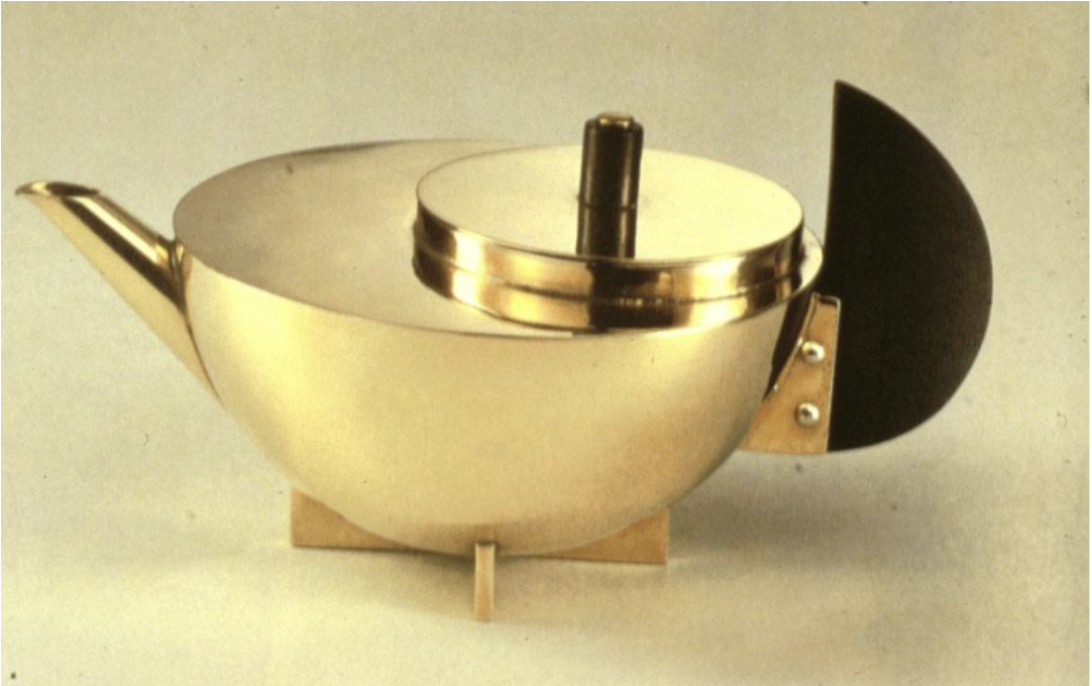
Bauhaus
Marianne Brandt, Teapot, Metalwork and Ebony, 1924
Designer that taught foundation courses at Bauhaus
She was the assistant for the metal shop
Teapot is the one of her most successful design
designed for mass production - basic shapes, simplicity, efficiency, economy of design. Nothing is hidden, can be mass produced with readily available materials
She ended up designing the lighting fixtures after Bauhaus changed location
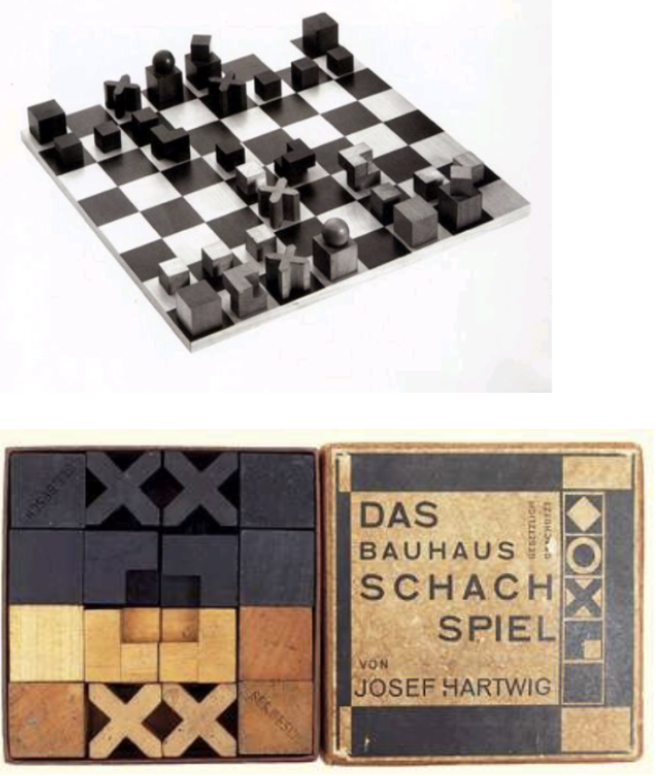
Bauhaus
Joseph Hartwig, Chess Set, 1924
No kings or queens
No hierarchy
Simplicity
The shape of the pieces relate to the movement of the pieces
Pieces are indicative of their functions
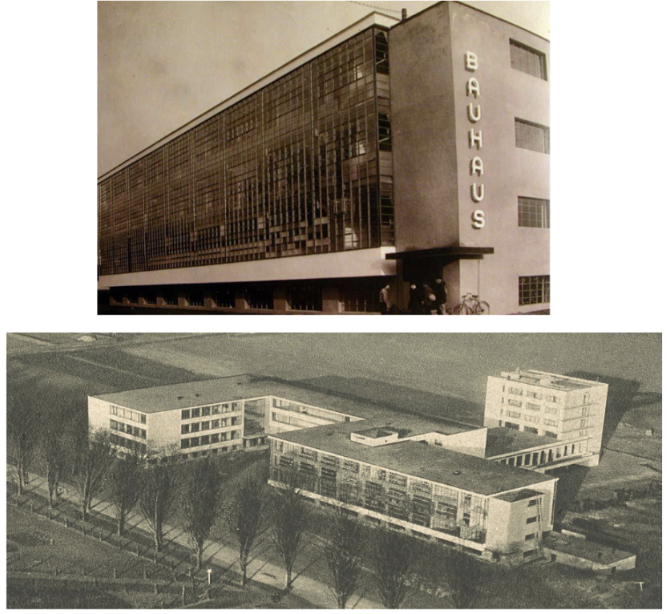
Walter Gropius, Bauhaus, 1925-6
Postcard sent to Jan Tschichold with aerial photograph of Bauhaus Dessau. Building: Walter Gropius, 1926. Photo: Junkers Luftbild, 1926.
Art and design school
Similar to constructivism after the revolution
All in effort to make life better through design
From Art and industry → Art and technology
Craft workshops start to disappear - more manufacturing and less handmade
Walter Gropius - first director
Art is not a profession - it should be channeled into building
Hence the emphasis on architecture
Belief that art cannot be taught but craft can
Modeled after a factory
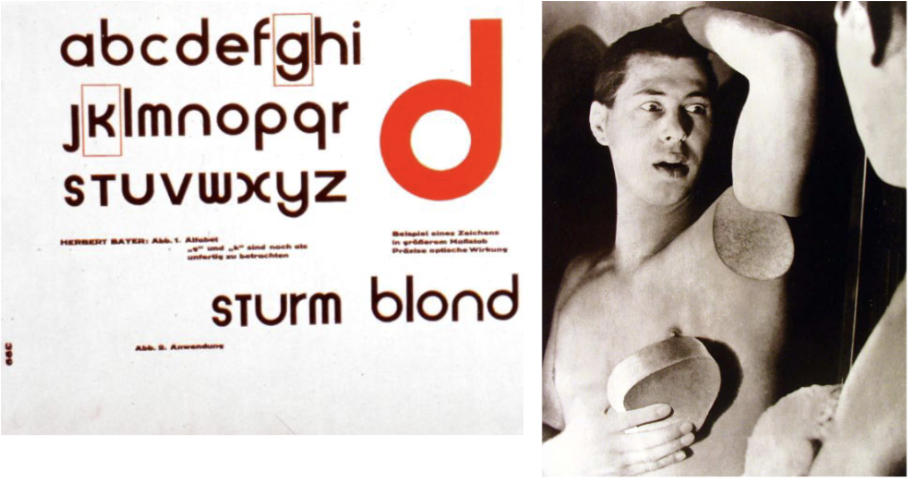
Bauhaus
Herbert Bayer, Universal Typeface, 1925
Another bauhaus designer: herbert bayer
A student and then became a master
Universal typography -
No capitals - idea to remove hierarchy
Dream like images
Bauhaus first comes to NYC through Herbert Bayer
Bauhaus - still the foundation of how art and design classes function to this day
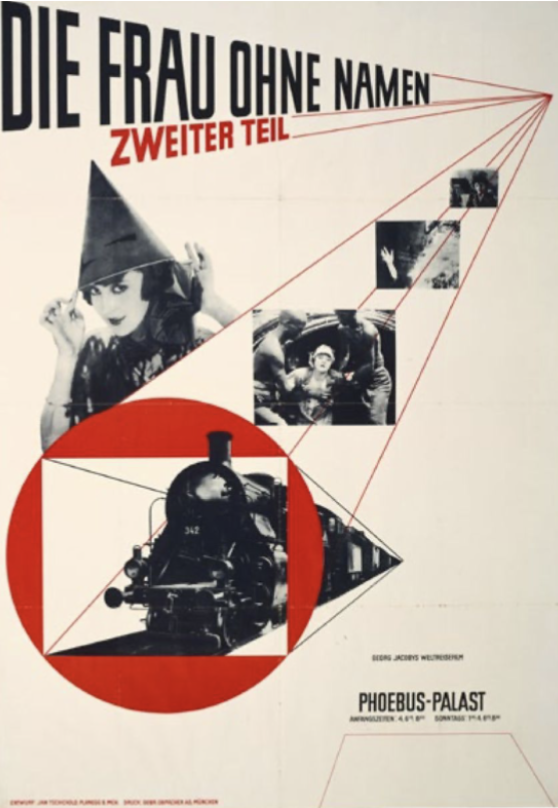
Jan Tschichold. Die Frau ohne Namen (The Woman Without a Name) poster, 1927. Printed by Gebrüder Obpacher AG, Munich. Photolithograph.
Not bauhaus nor constructivist, but truly inspired by them
Adopted ideals of bauhaus
Asymmetrical page design - to stimulate the eye
Published a manifesto - the new typography - encourages use of images
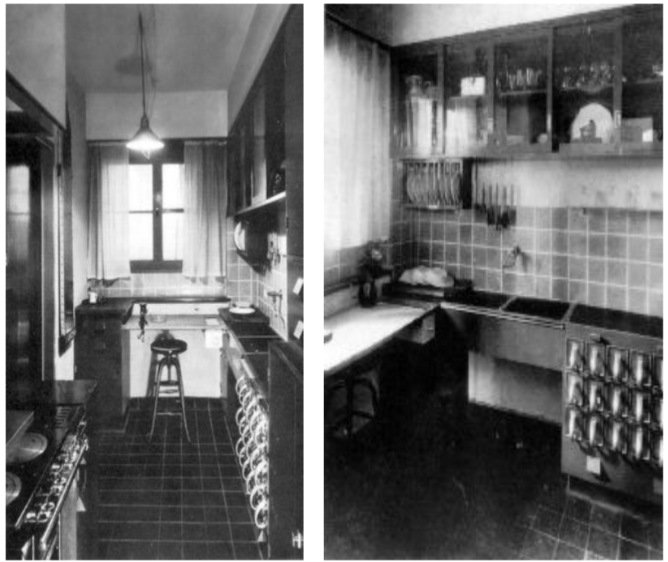
Bauhaus
Margarete Schutte-Lihotzky, The Frankfurt Kitchen, 1927
Bauhaus exhibition in Baumarkt
The New Frankfurt - 1925-1930 - affordable housing
New kitchen design: rational, unpretentious and socially engaging
aligned with egalitarian society
Designed like a laboratory or factory - hygiene, efficiency and workflow
Adjustable component and removable things
Oak flower containers to repel worms
Everything is carefully thought out
More of a study than pure design
1930 frankfurt kitchen installed for the last time because of Nazi party rise